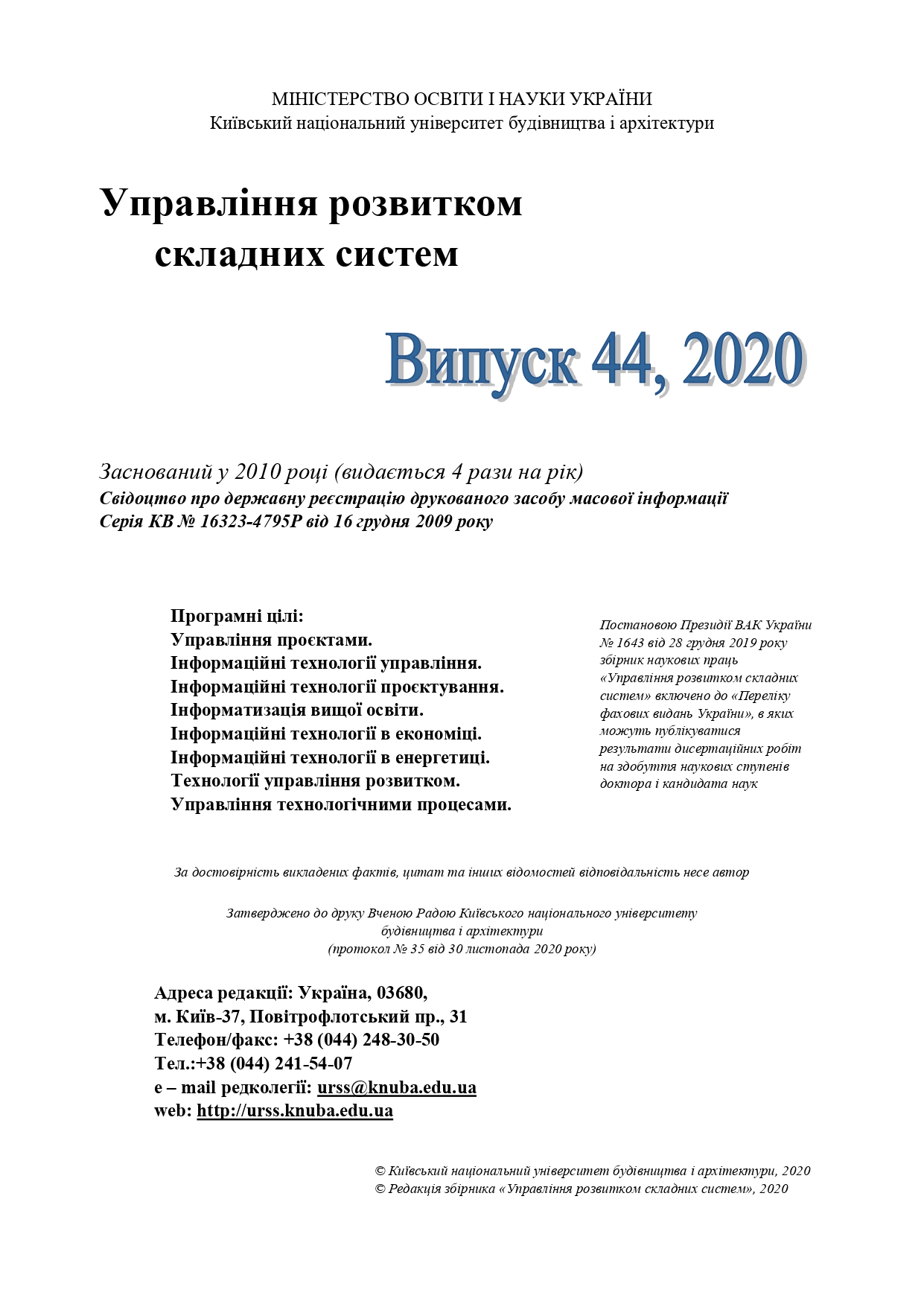MATHEMATICAL MODELING OF HYBRID VEHICLE’S RECUPERATION BRAKING MODE
DOI:
https://doi.org/10.32347/2412-9933.2020.44.182-187Ключові слова:
гібридний транспортний засіб, математична модель, режим рекупераційного гальмуванняАнотація
The paper considers the synthesis of mathematical model of recuperation braking mode for hybrid vehicle as a complex control object. The results of computer simulation as diagrams of transients of different operating parameters of hybrid vehicle power system are obtained on the basis of developed model. The analysis of simulation results confirms the adequacy of the mathematic model of the recuperation braking mode of hybrid vehicle to real processes. The developed model can be used for synthesis of automatic control systems of the electric motors, power converters, power supplies and chargers for hybrid vehicles. Hematical and simulation models of the hybrid vehicle’s recuperation braking mode is carried out. The presented models are based on equations of physics of processes and allow to study the recuperation braking mode of the different types hybrid vehicles under various conditions and parameters values (initial linear vehicle’s speed, electrical power of generator, inclination angle and the quality of the road surface, etc.). The designed mathematical model has a rather high adequacy to the real processes, which take place in the hybrid vehicles in the recuperation braking mode, that is confirmed by the obtained simulation results in the form of graphs of transients of the main variables changes. Further research should be conducted towards the development of the functional structures, control devices as well as software and hardware for automatic control systems of the different types hybrid vehicles on the basis of the obtained mathematical and simulation models.
Посилання
Chen, J. J., Zhou, L. X., Ning, X. B., Zhao, C. L., (2013). Design of Hybrid Electric Bus on Regenerative Braking System. Applied Mechanics and Materials, 300-301, 333–337.
Zheng, K., Yao, Y., Shen, T., Hikiri, K., et al., (2008). Modeling and Control of Regenerative Braking System in Heavy Duty Hybrid Electrical Vehicles. SAE Technical Paper, 2008-01-1569. doi:10.4271/2008-01-1569.
Rashid, Muhammad H., (2010). Modern electric, hybrid electric and fuel cell vehicles. Fundamentals, theory and design. Second edition. University of West Florida, CRC Press is an imprint of Taylor & Francis Group, an Informa business, 558.
Varocky, B. J., (2010). Benchmarking of Regenerative Braking for a Fully Electric Car. TNO Automotive, Helmond & Technische Universiteit Eindhoven, 54.
Okada, H., Yanagita, Y., Isomura, T., and Sekiguchi, T., (2007). A Study of Regenerative Braking Control of the Switched Reluctance Motor for Electric Racing Karts. SAE Technical Paper, 2007-01-0401. doi:10.4271/2007-01 0401.
Kohmäscher, T. & Murrenhoff, H. (2007). Efficient Recuperation of Kinetic Energy - Hybrid Versus Hydrostatic Approach. SAE Technical Paper, 2007-01-4153. doi:10.4271/2007-01-4153.
Hartavi, A., Uygan, I., Sezer, V., Güvenç, L., et al. (2008). Electric Regenerative Power Assisted Brake Algorithm for a Front and Rear Wheel Drive Parallel Hybrid Electric Commercial Van. SAE Technical Paper, 2008-01-2606. doi:10.4271/2008-01-2606.
Park, M., Kim, S., Yang, L., and Kim, K., (2009). Development of the Control Logic of Electronically Controlled Hydraulic Brake System for Hybrid Vehicle. SAE Technical Paper, 2009-01-1215. doi:10.4271/2009 01-1215.
Hartley, J., Day, A., Campean, I., McLellan, R., et al. (2010). Braking System for a Full Electric Vehicle with Regenerative Braking. SAE Technical Paper, 2010-01-1680. doi:10.4271/2010-01-1680.
Surampudi, B., Redfield, J., and Ostrowski, G., (2008). Mild Regenerative Braking to Enhance Fuel Economy via Lowered Engine Load Due to Alternator. SAE Technical Paper, 2008-01-2560. doi:10.4271/2008-01-2560.
Cross, D., (2008). Optimization of Hybrid Kinetic Energy Recovery Systems (KERS) for Different Racing Circuits. SAE Technical Paper, 2008-01-2956. doi:10.4271/2008-01-2956.
Sangtarash, F., Esfahanian, V., Nehzati, H., Haddadi, S., et al. (2009). Effect of Different Regenerative Braking Strategies on Braking Performance and Fuel Economy in a Hybrid Electric Bus Employing CRUISE Vehicle Simulation. SAE Int. J. Fuels Lubr., 1(1), 828-837. doi:10.4271/2008-01-1561.
Putz, M., (2010). VE Mechatronic Brake: Development and Investigations of a Simple Electro Mechanical Brake. SAE Technical Paper, 2010-01-1682. doi:10.4271/2010-01-1682.
Kovnat, A., (2010). Combining Hybrid Electric Technology with Multi-axle Drivelines. SAE Int. J. Commer. Veh., 3(1), 9-21. doi:10.4271/2010-01-1899.
Von Albrichsfeld, C. & Karner, J., (2009). Brake System for Hybrid and Electric Vehicles. SAE Technical Paper, 2009-01-1217. doi:10.4271/2009-01-1217.
Serikov, Sergey A., (2009). Synthesis of Optimal Control of Hybrid Engine Unit. Journal of Automation and Information Sciences, 41, 3, 71-81.
Boulon, Loic, Hissel, Daniel, Pera, Marie-Cecile, (2008). Multi physics model of a nickel based battery suitable for hybrid electric vehicle simulation. Journal of Asian Electric Vehiclec, 6, 2, 1175–1179.
Jinming, Liu, (2007). Modeling, configuration and control optimization of power split Hybrid vehicles. A dissertation submitted in partial fulfillment of the requirements for the degree of Doctor of Philosophy (Mechanical Engineering) in The University of Michigan, 164.
##submission.downloads##
Опубліковано
Як цитувати
Номер
Розділ
Ліцензія
Авторське право (c) 2020 Liu Na

Ця робота ліцензується відповідно до Creative Commons Attribution-NonCommercial-NoDerivatives 4.0 International License.

